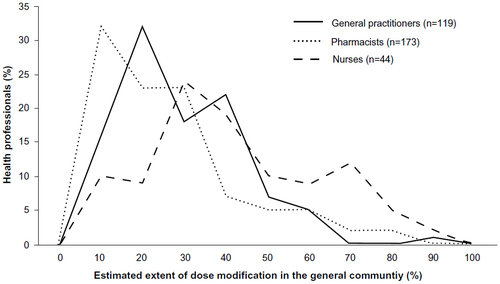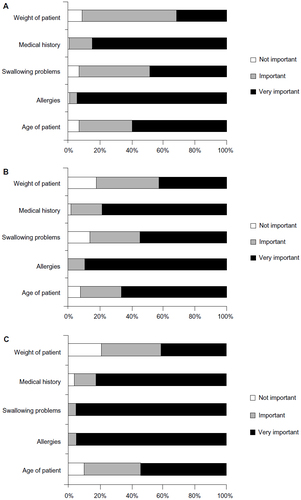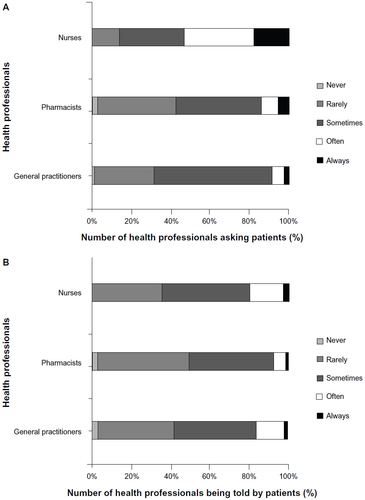Figures & data
Table 1 Demographics of the health professionals surveyed
Figure 1 Health professionals’ estimate of the percentage of people in the general community that modified their medications.

Figure 2 The influence of patient factors on the prescribing, dispensing, and administration of medications.

Figure 3 Experiences of health professionals asking about patients’ swallowing abilities, and being told by patients about swallowing difficulties.

Table 2 The solution health professionals would offer patients who could not swallow a non-sustained-release and noncoated tablet, in comparison to a sustained-release or a coated tablet
Table 3 Pharmacist, general practitioner, and nurse responses to a request to link potential outcomes resulting from the modification of some common medications
